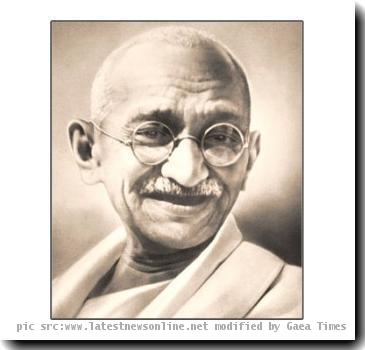Government’s stand sought on Mont Blanc using Gandhi’s image
By IANSMonday, December 7, 2009
NEW DELHI - The Supreme Court Monday sought the stand of the union government on a lawsuit challenging international luxury pen manufacturer Mont Blanc’s act of using Mahatma Gandhi as its poster boy to sell its newly launched ‘limited edition pens’ worth Rs.1.2 million (Rs.12 lakh) each.
A bench of Chief Justice K.G. Balakrishnan and Justice B.S. Chauhan sought the government’s stand, issuing notices to it on a lawsuit by two Delhi-based advocates Harsh Vardhan Surana and Sandeep Singh, who challenged Mont Blanc’s action.
The two advocates pleaded to the court to restrain Mont Blanc from commercially exploiting “the most respected face of India, that of the Father of the Nation” for a cause linked to luxury, which he fought all his life.
The bench also issued notice to Mont Blanc’s Indian wing and sought its reply to the lawsuit by the two advocates.
Mont Blanc has launched two versions of fountain pens in the name and style of ‘Limited Edition 241′ and ‘Limited Edition 3,000′, with their 18-k gold nibs carrying the engravings of a lathi-wielding “Mahatma Gandhi on the move” to the historical Dandi march.
The pens have also a fine gold wire entwined by hand on the middle of their “white gold barrel bodies”, the lawsuit pointed out to the court, quoting from a Mont Blanc catalogue.
The catalogue added that the manufacturer would be producing 241 pens under its Limited Edition 241 category with the number 241 symbolizing as many miles travelled by Gandhi during his famous 1930 Dandi march.
The catalogue said the Mont Blanc would be producing an additional 3,000 fountain pens and roller ball pens under its Limited Edition 3,000. The catalogue did not explain the symbolism of 3,000, if any.
In their joint lawsuit, Surana and Singh dubbed the move as an “attempt by some money-minded people to misuse the greatness of the Father of the Nation by using him as poster boy for commercial gains under the pretext that they are honouring him”.
The two advocates, in their lawsuit, pointed out that use of Mahatma Gandhi as a poster boy for commercial gain violates section 3 of the Emblems and Names (Prevention of Improper Use) Act, 1950, as per which no person can use for the purpose of any trade or business any name or emblem specified in a scheduled list annexed with the 1950 Act.
The lawsuit further pointed out that the “entry 9A” of this list mentions the name and picture of Mahatma Gandhi as one of the items, which have been prohibited from use for commercial exploitation.
Accusing the international pen manufacturer of hurting the feeling and emotions of Indians, the lawsuit said that the firm is using Gandhi’s greatness for its selfish gains.
The lawsuit has also challenged Mahatma Gandhi’s great-grand son Tushar Gandhi’s decision to allow Mont Blanc to allegedly misuse Gandhi’s name for commercial exploitation for a monetary quid-pro-quo of Rs.70 or Rs.75 lakh for the Navjivan Trust headed by him.
The bench, however, issued no notice to Tushar Gandhi and the Navjivan trust for allegedly allowing Mont Blanc to use Gandhi as its poster boy.
“Mahatma Gandhi is a symbol of simplicity and making him a poster boy for a lavish and luxurious product is against his very spirit and ideology, which he fought for all his life,” said Singh in the lawsuit.
Citing a May 1931 instance, the two advocates pointed out in the lawsuit that Gandhi himself was against the commercial exploitation of any facet of his personality.
The advocates said Gandhi, in response to a plea by a roof tiles’ manufacturer to use his portrait on the tiles, wrote back in May 1931 that “I have no copyrights on my portraits, but I am unable to give the consent you require”.
“Much against his wishes, the same thing is happening now and a move is on to commercially exploit his portrait,” said the lawsuit.
